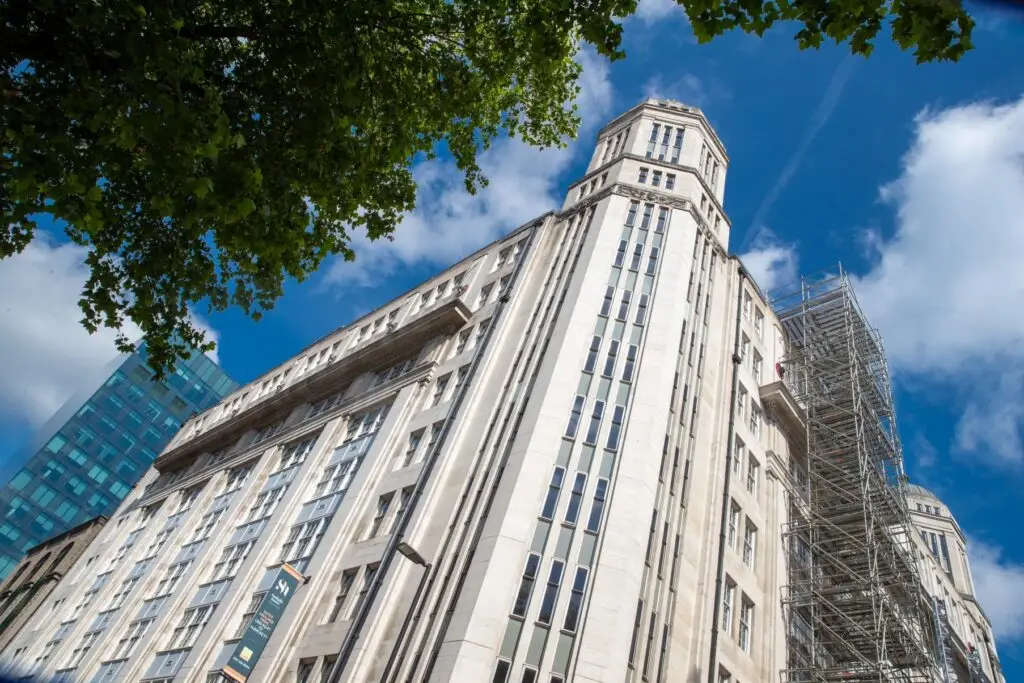G&H Group has embarked on a remarkable venture. They have secured the contract to refurbish Sunlight House, Manchester’s original skyscraper. The project aims to revamp the iconic building while achieving a net-zero carbon footprint.
The refurbishment involves significant changes. Mechanical, electrical, and public health designs are on the agenda. A team of 40, including apprentices, will be working on this ambitious project. They aim to preserve the building’s historical importance while infusing it with modern technology.
Project Overview
G&H Group has taken on a significant task. They will manage the mechanical, electrical, and public health (MEP) design for Sunlight House. This involves a complete refurbishment.
The work aims to improve energy performance. The goal is to achieve a net-zero carbon footprint for the building.
A team of 40, including apprentices, will handle this project. Their efforts will transform the 14-storey Grade A office building.
Sustainable Initiatives
Sustainability is a key focus of this project. G&H Group plans to install a solar PV system. They will also add new energy-saving lighting.
Other installations include modern fire, access control, and CCTV systems. Heating and cooling systems will be upgraded as well.
The project will also see an upgrade in power services. All these initiatives aim to meet Karrev’s environmental targets.
Leadership and Vision
Andrew Dunkin, the project manager at MYCO, expressed his excitement. He looked forward to restoring Sunlight House to its former glory.
David Davis, director at G&H Group, shared his enthusiasm. He emphasised the heritage and architectural significance of the building.
Both leaders stressed the importance of sustainability. Their goal is to ensure the building meets modern environmental standards.
Timeline and Milestones
The work on Sunlight House is set to begin in July. The first phase is scheduled for completion by April 2025.
This timeline is ambitious but achievable. It reflects the commitment of all parties involved.
Regular updates are expected throughout the project. These will keep stakeholders informed of progress.
Historical Significance
Sunlight House is a well-known landmark in Manchester. It was designed by Joseph Sunlight, a Manchester-based architect.
The building has Grade II listed status. This adds to its historical and architectural value.
Restoring such a building is a complex task. It requires careful planning and execution.
Community Impact
The refurbishment of Sunlight House will have a positive impact on the community. It will enhance the local skyline.
The project also offers job opportunities. A team that includes apprentices will gain valuable experience.
By improving energy performance, the building sets an example. It demonstrates a commitment to sustainability.
Technological Upgrades
Modern technology will play a significant role in the refurbishment. The installation of new systems aims to enhance efficiency.
Security upgrades like CCTV and access control are crucial. These will ensure the safety of the building’s occupants.
Upgraded heating and cooling systems will improve comfort. They will also contribute to energy savings.
Future Prospects
The successful refurbishment of Sunlight House could set a precedent. It may inspire similar projects in the future.
The focus on sustainability is particularly noteworthy. It aligns with global trends towards greener buildings.
This project could redefine standards for building refurbishments. It emphasises the importance of combining heritage with modern technology.
Challenges and Solutions
Such a large-scale project is not without its challenges. However, G&H Group is well-prepared to tackle them.
They have a skilled team and a clear plan. This ensures that the project stays on track.
By addressing potential issues proactively, they aim to minimise disruptions. Their goal is to deliver a successful refurbishment.
The Sunlight House project is a significant undertaking. With a diverse team and a clear focus on sustainability, the refurbishment aims to meet modern standards.
The project not only seeks to rejuvenate an iconic structure but also sets an example for future refurbishments. Achieving a net-zero carbon footprint reflects a forward-thinking approach.
The combined efforts of the teams involved underscore a commitment to innovation, heritage, and environmental responsibility.

